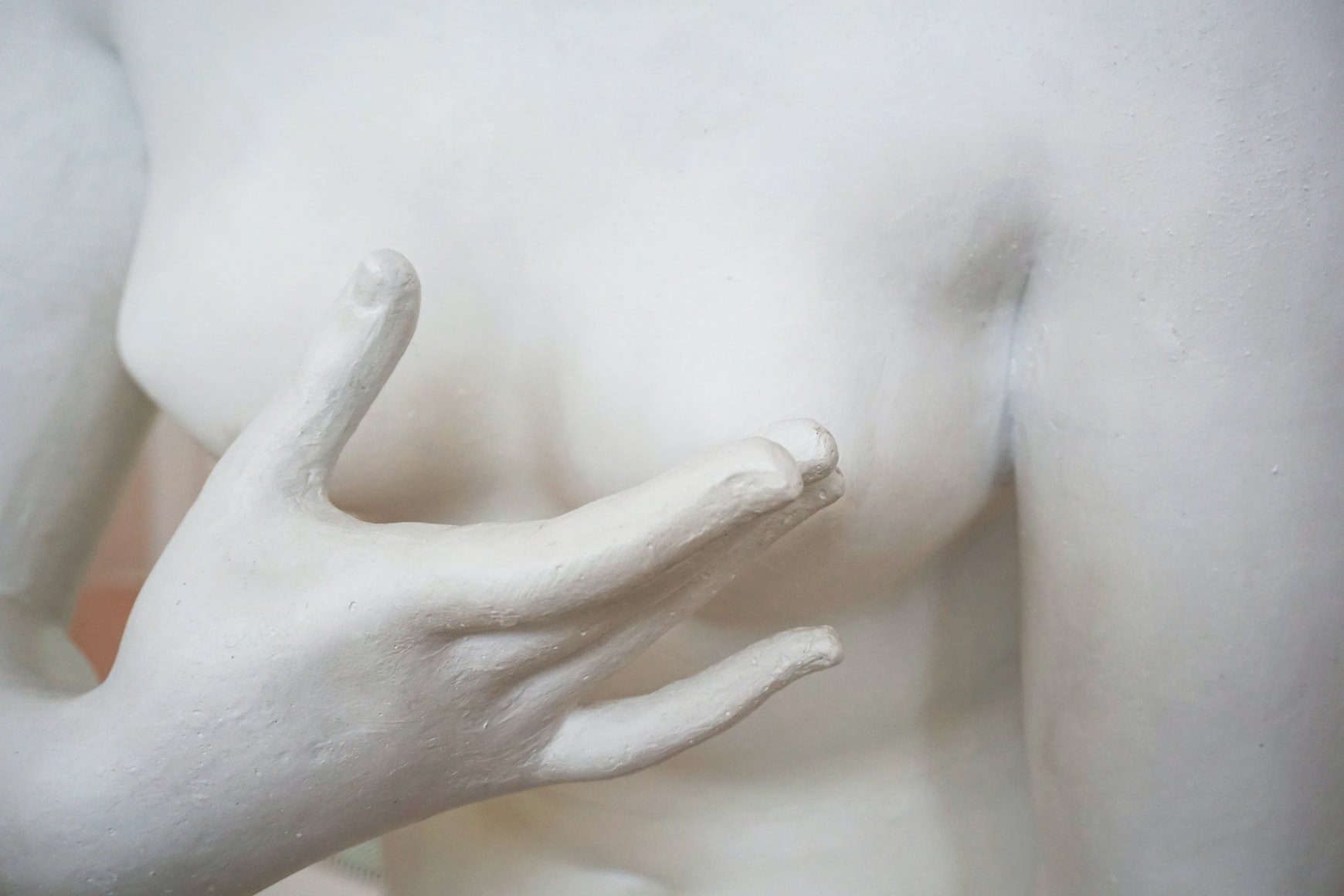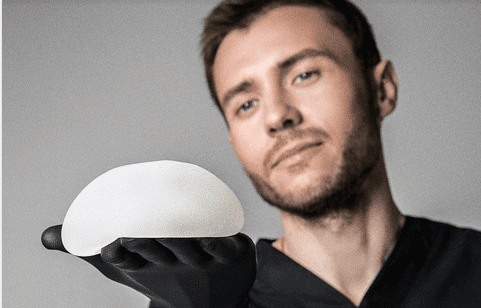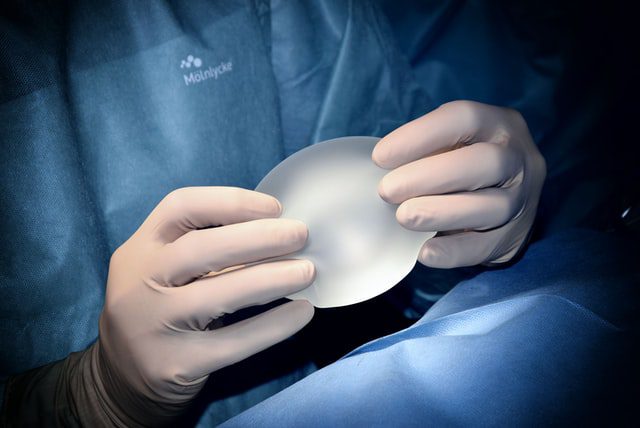
Saline vs Silicone Implants
Breast Implants
Breast implants are no longer reserved only for the purpose of breast augmentation. In fact, these days, breast implants can be used for a variety of different reasons. Anything from gender transition procedures to post-mastectomy breast reconstruction.
No matter the reason, deciding to get breast implants is a big decision and involves a lot of soul searching. You probably have a lot of questions and quite a few concerns. With this article, we hope to shed some light on some of your questions or concerns. The goal is to give you a better idea of the kinds of questions you can ask your plastic surgeons so that you can make the best possible decision for your personal needs.

Breast Augmentation vs Breast Implant for Transition Purposes
Long has the most popular purpose of breast implants been directly attributed to breast augmentation in cisgender women. However, with the era of gender reassignment surgeries well underway, the breast implant has been promoted to serve the purpose of helping to complete a male-to-female transition successfully.
There are some important differences in requirements related to breast augmentation surgery vs reassignment surgeries. And these differences need to be considered when choosing the appropriate type of breast implant (saline and silicone gel) for your individual needs.
Perhaps the biggest difference here is the presence or absence of significant amounts of preexisting breast tissue. Cisgender women are likely to have a larger percentage of preexisting breast tissue than trans women. This might end up playing a relatively large role in the final decision regarding the best types (saline and silicone breast implants) to suit your needs. Although it is by no means the only factor that needs to be considered.
At the moment, there are two overarchingly popular options to choose from. These are saline and silicone implants. Each option has its own pros and cons, both for augmentation or reconstruction, but also for transition. We will discuss these pros and cons and take a closer look at some of the factors that might further influence your final decision.

Silicone Breast Implants
What are they?
Silicone implants have a solid outer silicone shell filled with silicone gel. They are usually implanted whole and pre-filled.
Subcategories
There are different levels of cohesiveness (firmness/denseness) for a silicone breast implant that you would be able to choose from in order to find the best fit for your needs.
- The softest grade of cohesiveness for silicone gel implants is most common for normal breast augmentation surgery.
- Medium cohesive silicone gel implants are available for those who have encountered problems with the softest degree devices.
- High cohesiveness of silicone gel implants is good for reconstruction surgery.
Pros.
Silicone implants tend to feel more like natural breast tissue than saline breast implants do. This is because silicone gel mimics the feel of human fat and is more viscous than saline. There are, to date, no allergies reported to silicone gel, which makes these implants hypoallergenic.
Cons.
Silicone gel breast implants are often more expensive than saline. If you have chosen silicone gel breast implants, you will require regular MRIs because it is difficult to tell if they have ruptured because the breast tends not to lose its shape when a rupture occurs. The silicone implants also need to be pre-filled, which means that the incision is usually slightly bigger than what one can expect from saline implants. Incisions for insertion are usually made close to the armpit for this type of implant.
Transition Specific Factors
There are several factors related to silicone gel implants that stand out in terms of a trans woman's needs. Firstly, the fact that the silicone breast implants are inserted pre-filled raises concerns about stretch marks, and some difficulty adjusting to the sudden feeling of weight on the chest directly following the surgery.
What might end up being the deciding factor in these cases might be dependent on your desired cup size (volume). Larger volumes will obviously have increased chances of the above-mentioned factors.
However, it is still a fairly attractive option for transition surgery because of the natural feel of silicone gel implants. This is not something that should be overlooked.
The cohesiveness grades also offer up some variability in denseness which is also an important consideration. Ideally, when we look at a transition surgery we want to get as close to natural breast tissue as we can, and silicone implants give us a real chance at achieving this goal. It might be a good idea to ask your plastic surgeons whether you can feel the different densities for yourself. Plastic surgeons usually have implants on hand for this very purpose.

Saline Breast Implants
What are they?
Saline breast implants have a solid outer silicone shell filled with saline. Saline is basically a sterile saltwater mixture and is, therefore, less viscous than silicone gel. This means that saline breast implants are often inserted empty and then filled once already in place.
In order to combat the rippling of saline implants, there is now also an option for a 'baffled' saline breast implant. This creates different pockets that allow for a more natural level of movement of the liquid within the saline-filled implants making it appear and feel more akin to silicone gel implants.
Pros.
Incisions for saline implants are relatively small compared to what is required for a silicone implant. There are more placement options for saline implant incisions, such as a small cut around the areola, or via an incision made by the navel (although this option is not used nearly as often). Furthermore, ruptures can be detected rather quickly and pose slightly less of a health risk as saline is naturally absorbed by the body, and removal or replacement of ruptured implants can be done fairly easily.
Cons.
Saline implants have less of a natural feel to them than can be expected from a silicone implant. This is mainly because saline is much more liquid. Saline is therefore also more likely to ripple. Especially when the implant is quite large and the skin is stretched over it, any folds of the pocket or movement of the liquid can be seen through the skin.
Transition Specific Factors
A big advantage of saline implants is that they can be filled up after insertion. This is usually done during the surgery, but there is also an option to have it done more gradually, over the course of some time. Something like this will lessen the risk of stretch marks and make the adjustment period more gradual.
Again, the cup size will be significant as a larger cup size causes more stretching of the skin (resulting in thin skin) which can make rippling more apparent.
However, with the newer baffled implants, there is less risk of rippling, which really makes saline implants an attractive option for transition purposes as well.
Breast Implant Rupture
Possible Causes of Rupture
Three of the most common causes of implant rupture are: the age of the implant, trauma to the implant, or surgical procedures near the implants (usually biopsies). There is also a significant chance that the implant might have already been damaged during the initial surgery and that there were weak spots waiting to give way.
The aftermath of a rupture can vary depending on the extent of the rupture and the implant types. Ordinarily, implants are not expected to be permanent solutions and often require revision after some time has passed. This will be the case for any implant. In most cases, a plastic surgeon will be able to fix a rupture easily by removing the ruptured implant, and sometimes the capsular structure as well. For the most part, they will also be able to replace the ruptured implant during the same surgery.
There might be some cases where they would have a conversation with you about possibly switching to a different type of implant. But overall, a ruptured implant is not the end of the road.
Saline Implant Ruptures
Saline implant ruptures, as mentioned earlier, are easier to detect because the saline tends to leak out of the implant quite fast. This will cause an obvious change in the size of the breast. Should you detect such a change in size it is best to consult with your doctor immediately.
Any saline that leaks out of the implant is naturally absorbed by the body and ordinarily does not cause any adverse health effects. The capsule and implant shell can be easily removed and quickly replaced.
Silicone Implant Ruptures
It is far more difficult to detect a silicone implant rupture because the silicone gel is thicker and tends not to leak out of the scar capsule. This means that the breast tends to hold its shape and size. You could potentially go weeks, months, or even years before detecting that a silicone implant has ruptured. For this reason, the FDA suggests regular MRIs to help detect possible rupture of implants.
If the silicone does not leak out of the capsule it is also a relatively quick fix. There should not be any major health problems associated with such a case and the implant should be replaceable.
Silicone is not a substance that the body can absorb the way that it can absorb saline, so the body tries something else to deal with silicone. More often than not it will try to form more scar tissue to trap rogue pockets of silicone. These can become uncomfortable or can cause lumps and bumps, especially if they end up in the lymph nodes. They may need resection even after the initial surgery to replace a ruptured implant.
Capsular Contracture
Capsular contracture is an unfortunate complication of breast implant surgery that occurs no matter how good your surgeon might have been, regardless of the purpose of the breast implant surgery or the types of breast implants used. This is simply because everyone's bodies are different, and sometimes our bodies or immune systems overreact to foreign bodies.
No matter what happens your body will form a layer of scar tissue around the outer shell of your implants, a sort of breast capsule, this is perfectly normal and helps to keep the implant in place. But in some circumstances that scar tissue becomes abnormally hard or stiff, which causes contracture. This alters the shape and feel of the breast and can worsen over time.
Capsular contracture can be treated without surgery in some cases using the Aspen Rehabilitation Technique, but sometimes surgical intervention will be necessary. There are four grades of contracture.
Grade 1
There are no symptoms of grade 1 capsular contracture. It is completely normal and looks and feels natural.
Grade 2
You usually still cannot see any difference, but the breast begins to feel a little bit harder than one would expect.
Grade 3
Here the problem becomes evident. The breast feels quite hard and looks unnaturally round. There is still no pain (or extremely little pain) at this level.
Grade 4
This grade is much the same as grade 3, but there is pain involved. The breast is tender and pain will be present when touched.
Capsular contracture presents itself within the first two years following surgery three-quarters of the time. Late-onset contracture is extremely rare and is usually attributed to rupture or other trauma to the breast implants.
Smooth or Textured Implants
One of the last significant differences between implant types to consider is the surface texture of the implant. There are two options: smooth or textured implants.
Smooth implants tend to move around within their capsules like normal breast tissue would while a textured implant allows for better grip and stays more rigidly in place. The choice of textured implants or smooth implants will depend on a number of factors that you will discuss with your plastic surgeon. Mainly these factors will be influenced by cup size and whether you are choosing saline implants or silicone implants.

Frequently Asked Questions
Will I get stretch marks on my chest from breast implant surgery?
This will probably depend quite largely on the elasticity of your skin combined with the volume of your chosen implant. Smaller implants carry less risk of stretch marks, but if you have a low degree of skin elasticity then you may even develop some stretch marks with low volume implants.
If your skin is more elastic you could potentially get higher volume implants without developing any significant stretch marks. There is no significant evidence indicating a difference in stretch mark prevalence in either saline and silicone implants.
Are saline or silicone implants better for male to female transition surgeries?
There are no simple answers to this question. There are so many factors at play that vary greatly between different individuals. At the end of the day, you will need to discuss options with your breast augmentation surgeon and come up with the best possible implant type for your individual body.
Will my breast shape be natural if I choose saline implants?
The shape of the breast is not so much affected by the type of filling of the implant as it might be with the chosen shape of the implant. Both saline and silicone implants are available in a round or teardrop shape. Overall the impression is that the teardrop shape tends to appear more natural. So theoretically, if you find the ideal balance of implant characteristics to suit your body, then your breast shape is likely to be natural no matter which type of implant you select.
If this is a concern please feel free to bring it up with your surgeon so that you can discuss the difference in the appearance of saline implants and silicone breast implants in greater detail. The only immediate concern that is slightly heightened with saline implants is that saline implants do not move under the skin as naturally as a silicone implant does. There is also the risk of rippling with saline implants that need to be considered.
Will I have breast pain later in life if I choose high cohesion silicone implants?
You are far less likely to experience breast pain from an implant surgery than you are to experience prolonged back and shoulder pain. Pain in the breasts later in life will likely be attributed to complications or other factors like hormone levels. Pain in the back, neck, and shoulders is fairly common even soon after surgery and can continue into later life. This is simply due to the difference in weight distribution caused by breast implants.
Will a normal breast augmentation surgeon be able to perform my male-to-female implant based breast reconstruction?
Any board-certified plastic surgeon should be able to perform this surgery successfully, but it is always best, if at all possible, to seek out a specialist. Some plastic surgeons specialize in gender reassignment procedures, and they will likely have more experience and possibly better insights into the nuances associated with gender reassignment than a general board-certified plastic surgeon might. However, any board-certified plastic surgeon will be able to due diligently decide whether they can indeed perform such a surgery successfully during the course of your consultations. If your plastic surgeon suggests a referral it is best to consult with the surgeon that you are referred to.
Will my desired breast size affect my choice of implant type?
Your desired breast size will certainly be a factor, but it is not likely to be the only factor in your decision. Also remember that if you want larger implants but you are concerned about going straight to a large size, saline implants can be filled gradually. Although there is the issue of rippling with saline implants it needs to be weighed against the gradual filling of saline implants which can make it easier to adjust to a larger volume. This will be something that can be discussed with your surgeon.
Why were silicone implants banned in the US for so long?
Silicone implants were banned in the US by the food and drug administration for a time because it was believed that they increased the risk of autoimmune disorders, however, following extremely extensive research over the course of a number of years there was found to be no correlation between autoimmune disorders and silicone breast implants. Therefore, the ban was lifted and silicone implants are readily available in the US today. Both silicone and saline implants are fairly popular. Silicone and saline implants are also widely available in most other parts of the world.



